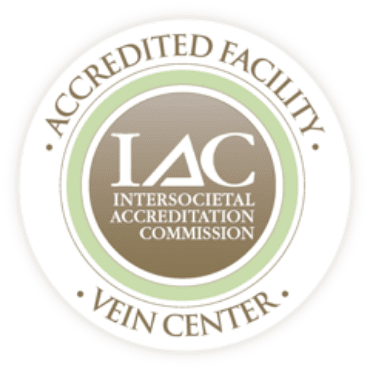I have written more than 20 different articles over the past few years about venous insufficiency highlighting the different patient types and presentations of this common disease. Just when I feel as though I have seen every possible clinical presentation or story, another patient with a different story walks through our doors. It remains clear to me that our continued efforts at sharing our clinical experience regarding the various and often obscure presentations of symptomatic venous insufficiency are well worth it.
Of the estimated 35-40 million adult Americans who suffer from significant superficial venous insufficiency, or venous reflux disease, many are focused solely on its visual or cosmetic impact and are often unaware of the other physical problems they have which may be related to this disease. Many physicians are also involved in the care of this large group of patients; however the signs and symptoms of significant venous insufficiency are often elusive. Patients may have undergone dermatologic biopsy of discolored skin around the ankle, with resultant difficult to heal biopsy sites. Others may have undergone cardiology evaluation for leg swelling or fluid overload; urologic evaluation for bladder problems manifest as nocturnal urination; or neurologic evaluation for neuropathy, leg cramps or restless legs syndrome. Others may have spent months undergoing wound care for what were thought to be “diabetic ulcers” or other traumatic ulcers. There are a myriad of presentations of venous insufficiency other than the garden variety, “Varicose veins or spider veins”.
The role of the modern, educated and dedicated Vein Specialist is to educate both patients and physicians of all specialties regarding routine as well as the more obscure presentations of venous insufficiency. Equally as important as the training, skill and dedication of the Vein Specialist are the same three qualities of the Vascular Technologist. Unlike the CT scan or MRI, both of which gather and present radiographic data in a more standardized and mechanized fashion for final interpretation by the physician, quality ultrasonography of any organ system or blood vessel is critically dependent on the skill, training, experience and training of the individual technologist. In the field of Phlebology, or Venous Disease management, establishing the presence or absence of deep venous thrombosis or superficial venous thrombosis is only one goal of the exam. The most critical goal in the evaluation of patients with one or more of the myriad of symptoms which fall under the broad umbrella diagnosis of Venous Insufficiency is the identification of specific insufficient veins as well as the stratification of severity of the insufficiency.
By definition, “significant insufficiency” is defined as greater than 0.5 seconds of venous reflux with the Valsalva maneuver or with manual augmentation. In our experience of treating thousands of patients with the full spectrum of disease, this criterion has proven to be woefully inadequate in identifying which patients are most likely to benefit from endovenous ablation. Many patients have more than one of the potential 5 superficial leg veins identified as insufficient and 5-10% of our patients have combined superficial and deep vein insufficiency. Thus stratification of the severity of insufficiency or reflux times, rather than using this arbitrary cutoff of 0.5 seconds is critical to determining which of the superficial veins would benefit from endovenous ablation and in cases of mixed insufficiency, the reflux times (in seconds) as well as the reflux velocities are absolutely necessary to selecting patients likely to realize significant benefit. If one suspects their patient may have venous insufficiency, it is our recommendation to refer that patient to a qualified Vein Specialist for the full evaluation including the venous insufficiency ultrasound.
Call Or Request An Appointment
Contact us to schedule an appointment with our expert Vein Specialists team. We will evaluate your signs and symptoms, answer your questions, and create a personalized vein care treatment plan to relieve your leg pain and enhance your life.
Schedule Your Appointment TodayThese conditions may be a bit more obscure than the garden variety varicose or spider veins and we encourage physicians to include venous insufficiency in the differential diagnosis in their patients with swollen legs, non-healing ulcers, restless legs syndrome, nocturnal leg cramps, nocturnal urination in women, neuropathy, tarsal tunnel syndrome, volume overload, and other symptoms affecting the lower extremities. In the past few months I have seen a few dozen young women who have had urologic evaluations for nocturnal urination (all with swollen legs) and we have documented severe superficial insufficiency. Following successful endovenous ablation of the insufficient superficial veins their nocturnal diuresis has resolved as the cause of their edema has been cured.
Other patients have presented with the diagnosis of idiopathic lymphedema of one or both legs without any identifiable surgical, infectious or familial cause yet have not been studied for venous insufficiency. Yes, these patients also had severe superficial venous insufficiency and the only way to determine the venous contribution to their “lymphedema” was to seal the severely abnormal veins. Other musculoskeletal and orthopedic conditions I have recently encountered and achieved success after vein treatment of their severe insufficiency include tarsal tunnel syndrome in a 40 year old male who failed their surgical tarsal tunnel releases. He was noted on the op note to have extensive varices in the tunnel and second opinion podiatry evaluation led to referral for further venous evaluation and the diagnosis of severe bilateral great saphenous vein insufficiency was identified by our exam. Staged endovenous ablation after trial of compression hose resulted in near complete resolution of his preop symptoms. Tendonitis around the distal leg, ankle or foot in a patient with severe leg swelling or other more obvious signs of venous insufficiency such as skin discoloration, thickening or large varicose veins in the same extremity, should prompt one to consider venous insufficiency as a potential contributing factor and referral for formal venous evaluation would be logical.
Request an Appointment
Please take a moment and fill out your request below and one of our staff members will be in contact within 24-48 business hours. If this is an emergency, call 911 immediately. If this is a non-emergent concern, please call the office Monday-Friday between 8am – 5pm at: 239-694-8346

